Your brows do more than frame your face. They tell a story about you. They express emotion, add balance, and when shaped correctly, can lift your entire look. The right brow shape acts like a subtle facelift. The wrong one? It can drag your features down, throw off your symmetry, and make you feel less than your best.
The truth is, brow shape is never one-size-fits-all. Your ideal shape depends on your bone structure, muscle tone, hair growth pattern, age, and even personality. Get the shape right, and you’ll feel polished, confident, and effortlessly put together. And while brow trends come and go, the best brow for you is always the one that enhances your unique features.
Whether you're considering cosmetic tattooing or simply refining your at-home grooming routine, this guide will help you understand how to find the right shape for your face.
Why Brow Shape Matters
Your brows influence how your facial features are perceived. They frame the eyes, shape the face, and define symmetry. A slight arch can lift the eye area, while a straighter brow can soften sharper features. When we customise brows to your natural structure, we’re sculpting harmony, not just chasing trends.
The Golden Rules of Brow Shaping
Every brow has four defining points:
- Head: The inner corner near the nose
- Body: The central section that sets the tone and density
- Arch: The highest point, usually two-thirds along the brow
- Tail: The outer taper that completes the brow
The most flattering brows take these points and align them with your unique bone structure and facial proportions.

Face Shape Fundamentals
Understanding your face shape is the first step to choosing a shape that brings balance and structure.
- Oval Face: This versatile face shape suits almost any brow. A soft arch or a slightly lifted straight brow adds polish without overwhelming.
- Round Face: The goal is to elongate the face. A medium to high arch draws the eyes upward and adds definition.
- Square Face: A defined brow balances a strong jawline. Try a softly angled arch with medium thickness.
- Long Face: Horizontal, straight brows help balance facial length by drawing the eye sideways.
- Heart-Shaped Face: A rounded or softly arched brow complements a wider forehead and narrow chin.
- Diamond Face: Curved brows help soften angular features and create harmony.

Eye Shape and Brow Shape
Your brows play a key supporting role in how your eyes are framed.
- Upturned Eyes: A straighter shape or soft arch helps balance the upward tilt.
- Downturned Eyes: A lifted tail or gentle arch creates an uplifting effect.
- Hooded Eyes: A soft arch placed above the natural fold opens the lid area.
- Wide-Set Eyes: Brows can start slightly closer together to balance spacing.
The Role of Angle and Eyelid Room
It’s not just shape that matters – angle changes everything. Straight brows can feel calm and youthful with a flat angle, or modern and lifted with an upward slope. Similarly, arched brows can feel soft and feminine with a gentle curve, or bold and structured with a sharp peak.
The angle works in harmony with your eye shape. For example:
- If your eyes tilt downward, a soft upward brow slope lifts and balances.
- If your eyes already turn up, a horizontal or straighter brow neutralises intensity.
Eyelid room – the space between your brow and eyes – is another key factor. If the space is tight, go for shapes that create the illusion of openness (such as soft arches or horizontal brows). Too much arch on a low brow bone can appear crowded or severe.
Working With Your Brow Bone
Your brow bone sets the stage. Trying to force a shape that doesn’t align with your bone structure often feels “off”. Those with pronounced brow ridges may find it hard to wear flat brows, while flatter brow bones can accommodate a wider range of styles.
Instead of working against your bone structure, work with it. The goal is to enhance and elevate your natural proportions.
Brow Shapes Explained
Let’s break down the most common brow shapes:
- Arched Brows: A gentle peak adds lift without harshness. Universally flattering and ideal for balance.
- Rounded Brows: A smooth, curved shape that softens strong features. Great for long or angular face shapes.
- S-Shaped Brows: Dips slightly at the start, arches in the middle, and tapers off. Adds dimension to oval or round faces.
- Straight Brows: Flat from start to tail with little to no arch. Creates a soft, youthful, and calm appearance. Ideal for long faces or those seeking a more natural, effortless look. But if too flat, they can visually divide the upper and middle thirds of the face.
- Steep Arched Brows: More dramatic with a steeper angle. They add definition, elongate the face, and lift the eye area. Best for round or wider faces.
- Upward Brows: The brow line rises from head to tail with minimal arch. This modern style opens up the eyes and adds a lifted, editorial edge—ideal for shorter foreheads or a bold, fashion-forward look.

Straight vs Arched: Which Is Right for You?
There’s no definitive winner—each shape offers benefits.
Straight Brows:
- Softer, more youthful appearance
- Balance for long or narrow faces
- Minimise the emphasis on lower facial features
Arched Brows:
- Lift and open the eyes
- Create structure and polish
- Great for round, square, or heart-shaped faces
Keep in mind: a straight brow can still add lift if angled slightly upward, and a soft arch can look gentle and feminine. The key lies in the angle and placement.
Personality and Lifestyle
Your brows also reflect your personality and lifestyle.
- Prefer a natural look or low-maintenance routine? A softly structured, straight shape might be ideal.
- Love a bold, defined finish? A high arch can amplify your look.
- Looking to soften your appearance? Rounded or softly arched brows add approachability.
How you want to feel when you look in the mirror matters. Whether it’s confident, creative, youthful, or powerful—your brows can help communicate that.
Hormonal Changes, Ageing & Hair Loss
Over time, our brows naturally thin, lose pigment, or shift shape. Hormonal changes during perimenopause and menopause can accelerate this process, leading to patchy or sparse growth.
Conditions like alopecia or chemotherapy-related hair loss can also impact brow density. In these cases, cosmetic tattooing can do more than restore shape—it can restore confidence and a sense of normalcy.
Even without tattooing, techniques like microfeathering, soft pencil strokes, or powder fill can help rebuild definition and lift.

Shape vs Position: Why Both Matter
When we talk about your ideal brows, it’s not just the shape that matters — it’s also the position.
Think of shape as the silhouette or outline of your brow — the arch, curve, thickness, and tail. Shape determines the character your brows express: soft and rounded, bold and angular, straight and serene.
Position, on the other hand, is about where your brows sit on your face. Are they closer to the eyes or set higher on the forehead? Do they start close to the centre of your nose, or further apart? These subtle shifts in placement can dramatically affect your appearance — often more than shape alone.
For example:
- Higher-positioned brows can open up the eye area and give a more lifted, elegant feel — but if placed too high, they can also elongate the mid-face and create a more mature impression.
- Lower-positioned brows can look sultry and intense, but if they sit too close to the eyes, they may crowd the lids or make the eyes appear smaller.
- Even adjusting the starting point (brow head) slightly outward or inward can balance close-set or wide-set eyes.
The goal is to assess the natural contours of your brow bone, forehead height, eye spacing, and muscle movement. This finds the perfect balance between shape and position so your brows feel like they’ve always belonged to you.
What to Expect from a Professional Brow Mapping Session with Tanya Beauty Care
At Tanya Beauty Care, creating the perfect brow begins with one essential step: professional brow mapping.
This highly personalised process is the foundation of any cosmetic tattooing service. It’s where artistry meets precision—and where your new brows begin to take shape.
Here’s how it works:
- Face & Feature Analysis: We begin by carefully analysing your face shape, bone structure, symmetry, natural brow growth, and skin tone.
- Precise Mapping: Using industry-leading techniques and tools, we take detailed measurements to map a brow shape that enhances your natural features. This includes the start, arch, and tail—all customised to bring lift, balance, and proportion to your face.
- Personalised Consultation: Your lifestyle, preferences, and aesthetic goals are all factored in. Whether you’re after something soft and subtle or more structured and defined, we work collaboratively to find the shape that feels just right for you.
- Design Preview: We draw your brows on first, adjusting the shape with your input to ensure you’re completely comfortable and excited before any tattooing begins.

Once the mapping is finalised, we tailor the cosmetic tattooing technique to suit your skin type and desired look. Most often, this means combining feathered strokes at the front with soft shading through the body and tail to mimic the natural density and dimension of real brows.
The result? Brows that are expressive, natural-looking, long-lasting—and unmistakably yours. The perfect brow isn’t about following a trend. It’s about balance, proportion, and expression. When you find a shape that aligns with your bone structure, enhances your features, and reflects who you are, it elevates your whole appearance.
Whether you’re pencilling them in or investing in cosmetic tattooing, take the time to explore what works best for you.









































